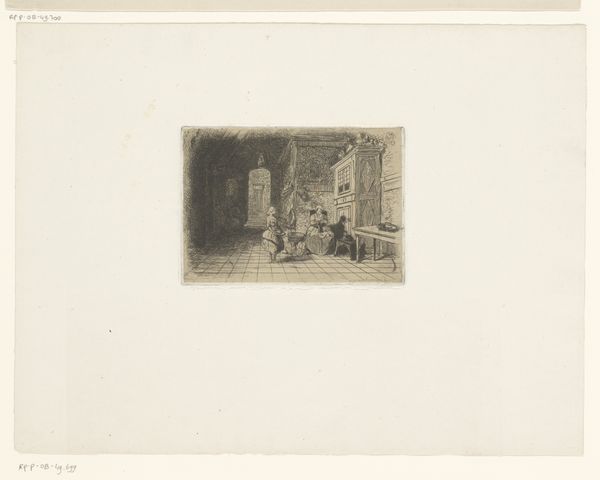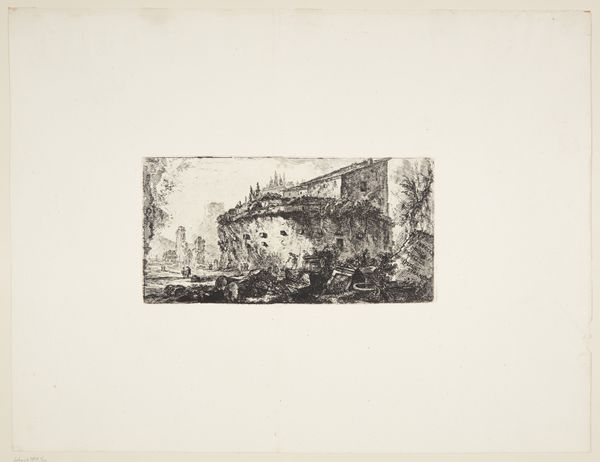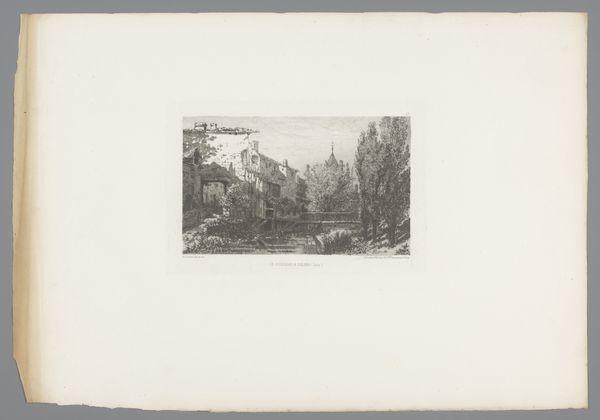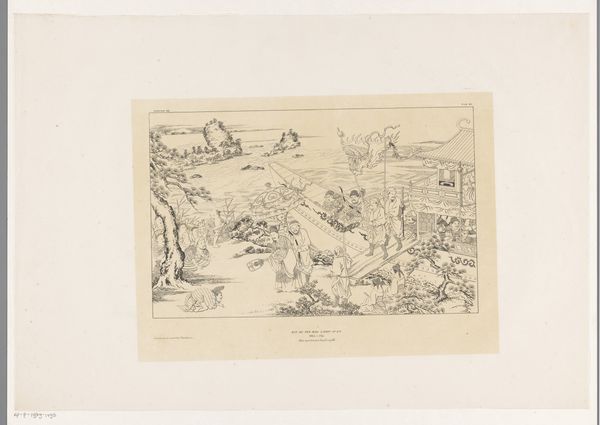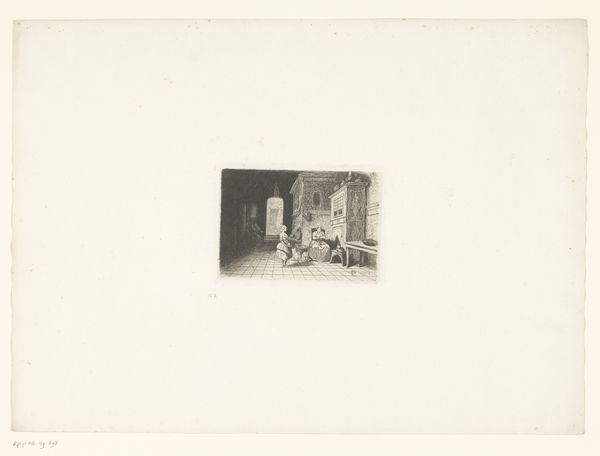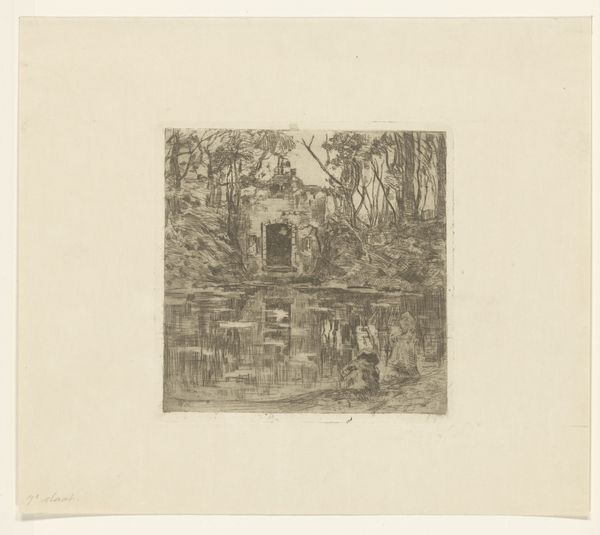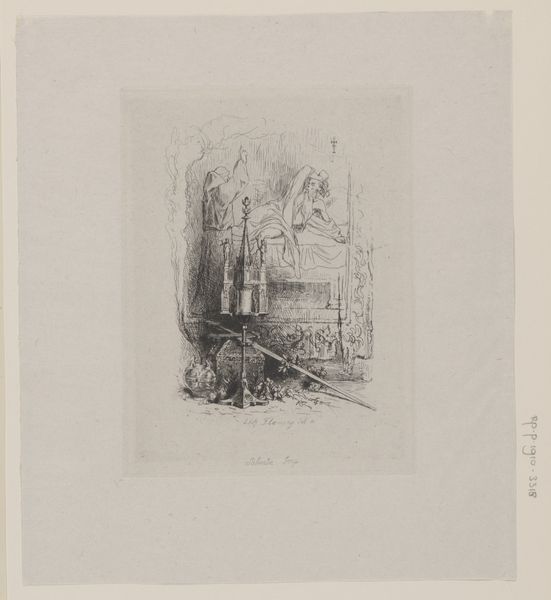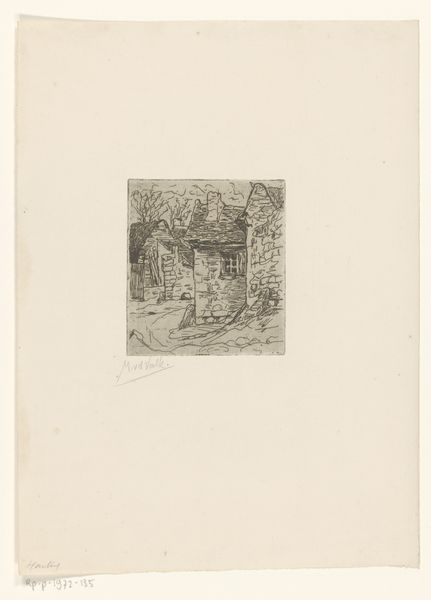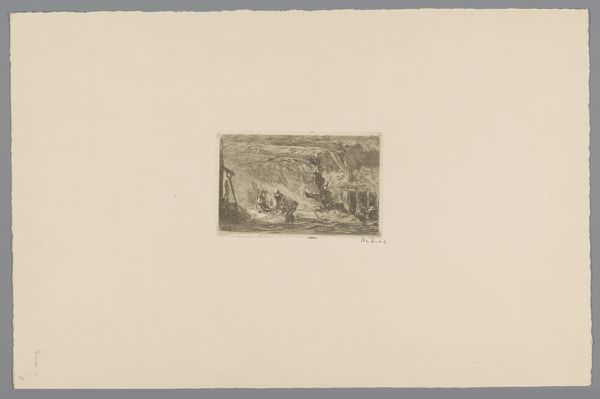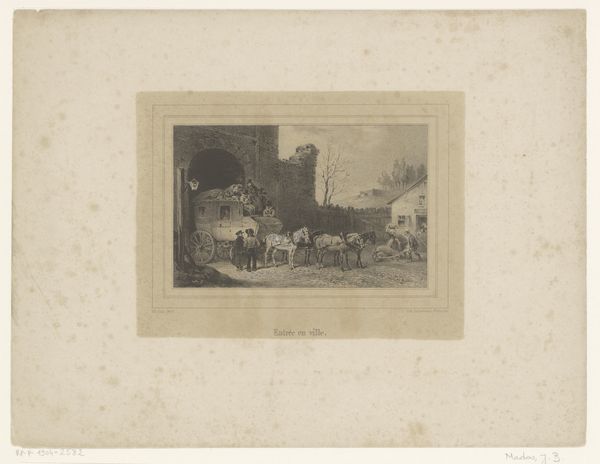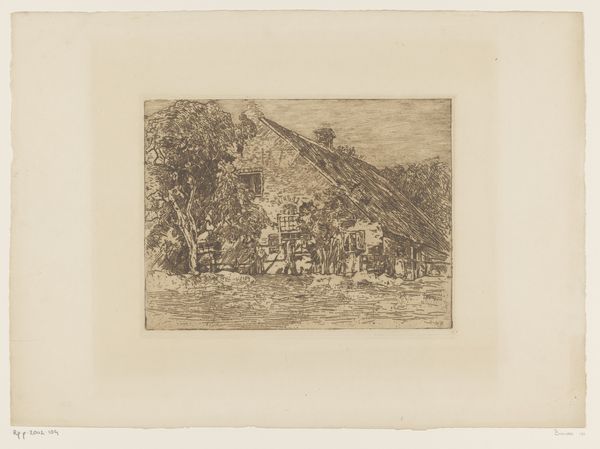
drawing, print, etching
#
drawing
#
dutch-golden-age
#
ink paper printed
# print
#
etching
#
landscape
#
personal sketchbook
#
ink drawing experimentation
#
pen-ink sketch
#
sketchbook drawing
#
genre-painting
Dimensions: height 130 mm, width 163 mm
Copyright: Rijks Museum: Open Domain
Curator: Willem de Zwart, circa 1896, presents us with “Vrouw bij een waterpomp voor een boerderij”, or "Woman at a Water Pump in Front of a Farm". It’s an etching printed on paper. Editor: My first thought is the sheer labour suggested by the image. You can almost feel the weight of the water she’s drawing, the roughness of her work clothes. The print's tones reinforce a sense of hard work under unforgiving skies. Curator: Indeed, and what makes it particularly interesting to me is how the artist renders that labour through the etching process. Consider the material choices – the relatively inexpensive paper, the reproducibility of the print – this brings fine art techniques to a broader public. This isn't an oil painting commissioned for a wealthy patron; this speaks to accessibility and documentation. Editor: That is spot on. The way de Zwart chooses this commonplace scene - a woman at work - and elevates it through artmaking is a significant social commentary. In late 19th century Netherlands, the agrarian sector was crucial. It highlights their indispensable, yet often unseen labor. Where would you position this image within the genre art landscape of that period? Curator: Good question. Its connection to the Dutch Golden Age Landscape and genre paintings, particularly those depicting daily life, is apparent. Artists then depicted ordinary subjects and moments and imbued them with inherent dignity. Now it’s important to examine this work through its distribution and exhibition. Where was it shown? Who bought it? And how did those venues and purchasers contribute to the perception and valuing of de Zwart’s work? This isn't just about representing the working class, but about inserting that representation into a wider cultural discourse, changing who art is for and what it portrays. Editor: Absolutely. It's a reminder of the artistic process itself, how it’s disseminated, and who benefits. What's really captivating here is this interplay, highlighting that artistic interpretation of reality, filtered through economic realities as well. Curator: Exactly. De Zwart captures this reality and, through printmaking, seeks to make it more widely available. Editor: Considering the conditions under which she worked adds such an impactful narrative layer, reminding us how deeply embedded social commentary could be within a seemingly simple genre scene. Curator: A perfect blend of the personal, material and political!
Comments
No comments
Be the first to comment and join the conversation on the ultimate creative platform.
